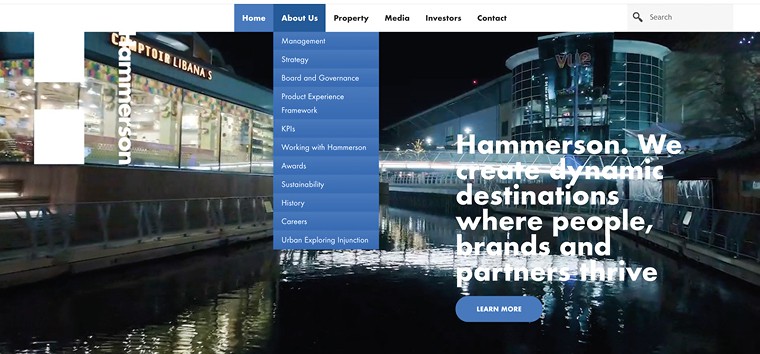According to Savills, the 2017 global Real Estate market value totalled $217 trillion and the commercial sector alone, had a value of $770 billion in investments. The Real Estate industry relies heavily on marketing and a well-equipped marketing strategy is imperative to many businesses as well as Real Estate.
A strong website is a key component in lead generation for the Real Estate sector, this is supported by the Commercial Real Estate Consumer Online Behaviour & Trends study which was carried out by Google and LoopNet.
A Real Estate website is an exceptional marketing tool which aids your audience to find out more information about your services and properties. It is also a tool which visualizes unique selling points of properties at the first glance and this is why your website needs to incorporate and adapt the top five elements of a winning Real Estate website.
Images & Video
There are various factors which need to be considered when establishing a Real Estate website, one of which is visuals. Whilst being able to provide suitable and relevant information, your site should also be visually engaging for your potential leads and clients. Video tours and imagery are essential to selling your properties online by driving your online traffic to contact you further. Consumers are conscious of how they are spending their time which is why many choose to do their research online first. Images and videos allow you to provide more detail without having to explain using text. As a result, your audience is more engaged with your content and more likely to respond to your CTA’s.
As internet speeds are continually increasing, it is a great opportunity for marketers to make use of implementing high-resolution images and video content onto their website. According to HubSpot, 55% of people pay close attention when consuming videos as compared to all other types of content. Additionally, Cisco has concluded that by 2020, online videos will make up more than 80% of all consumer internet traffic.
Videos and visual content are important to consumers as it enables them to retain information far better than other content. Hines has incorporated video content onto their website as an introduction to the firm, the use of high-resolution visuals throughout the video reinforces their professionalism and their brand.

However, virtual tours, property listing, interior design, agent profiles and customer testimonials are also great video content ideas which can be used to generate website traffic and influence leads. Real Estate websites should participate in this growing trend of video content as it will benefit their SEO, social media and lead generation.
A Digital Asset Management system like OpenAsset enables Real Estate marketers to simplify their image and video collation process. OpenAsset allows you to organise your visuals by projects and you can tag them with specific keywords that relate to each project. This means that you and your colleagues can find the visuals without sifting through content on your local drive.
OpenAsset is also integrated with InDesign. The InDesign integration allows you to open your high-resolution images from your OpenAsset system directly onto InDesign without having to switch or open programmes separately. This means that marketing collateral such as blog images and banners can be created and uploaded onto your website efficiently.
With REST API you can create custom CMS integrations. By integrating both systems, you can automatically upload your visual content from your DAM onto your website without having to download the image files. You can personalize your carousel with your high-resolution images with ease by selecting your visuals from your DAM which will automatically be updated onto your website.
The structure of your website is very important therefore it should be designed to meet the needs of both your firm and your consumers. Your website should be visually pleasing and perform well, as it’s at the forefront of your brand. A consistent design with a minimal range of colors and simplistic front allows your audience to stay focused on your content and efficiently navigate across your website.
The theme of your website should reflect your brand persona such as your brand colors and fonts. Maintaining your brand attributes across your website will enable you to increase your recognition thus influencing consumer perceptions of your firm and your lead generation.
Alongside keeping up with content trends, your website should also keep up with design trends. Although the expectations of a website design will vary across industries, a Real Estate website can still be professional and creative. It is important to remember that the theme and overall design of a Real Estate website should be responsive across all devices, a successful website is one which remains consistent and easy to use across a laptop, tablet and smartphone as well as different internet browsers.
In order for your audience to be able to find all the relevant pages and navigate around your website, your site should have visible links which are available on each page of the website. Your navigation buttons should be easy to read and use as well as indicating where the user is on the site. An important aspect of websites which can be easily overlooked is the URLs. Each URL should be concise and descriptive as well as maintain a similar format across each page which is beneficial for your users and increasing your SEO.
Additionally, it is highly recommended for you to make use of Call To Action buttons which should direct your audience to either your contact page, email or other relevant properties/information. When redirecting to pages such as your Contact page, your audience should be able to locate your contact details as well as a form for them to leave their details. This is an essential page for all websites and it is highly advisable for you to provide prominent CTA’s as it more likely for you to gain leads from users who have visited your contact page. The Hammerson website focuses on creativity and navigation whilst remaining simplistic. Their site has incorporated high-resolution visuals with clear CTA’s which allow their users to navigate across their website with ease.

CTA buttons enable conversions as they guide your audience on their customer journey and they are a useful tool to achieve goals such as lead generation targets. CTA’s are also beneficial for guiding your audience towards blog and e-book content as well as your social media.
Content
Whilst having an aesthetically pleasing website is highly important, producing relevant and useful content is also vital. Your content is a key driver for increasing website traffic, it is a tool used to nurture your audience until they become leads and it is an essential factor for convincing your audience to opt for your services and properties. Your audience may not choose to contact you or continue on their customer journey just by viewing your visuals, in order to persuade them they will need compelling content which reinforces that you and your company are industry experts. The more relevant content you generate for your website, the more your audience will return; which can result in them converting into qualified leads.
Consistent content helps increase Search Engine Optimization, this is the process of maximizing the number of visitors to your website by ensuring that your site appears high on the search results list. Increasing your SEO has many benefits, two of which are increased leads and competitive advantage. Achieving high SEO is an ongoing process which requires content to be generated frequently. Here are a few content ideas for your website:
Industry News:
In order to be seen as an industry expert and preferred Real Estate firm, you will need to stay up to date with the latest industry news. This also entails making your consumers aware of the trends, the latest research and statistics in your sector. By generating content based on your industry, it will be simpler for you to maintain and implement keywords which are vital for your SEO. A great example of a Real Estate company implementing an industry news section on their website is Savills.

Testimonials:
As well as being an industry expert, it is also beneficial for your new leads to be aware of your client’s experiences when using your services. Client testimonials allow you to be versatile when generating content as you can opt for a text-based interview, short video clips or simple quotes. Your client testimonials will also boost your credibility as well as developing a trusting relationship with your new leads. Encouraging your clients to leave feedback on Google or other websites can also increase your SEO and visibility online.
Resources:
Resources can include whitepapers, how to guides, webinars and case studies. All of which benefit your credibility and increase your competitive advantage. Whitepapers, how to guides and webinars enable you to portray knowledge to your audience as well as educate them on a larger scale. Client case studies can include in-depth interviews which allow you to show your audience your relationship with your current clients. Well-thought-out client case studies can also help your audience to imagine themselves as your customer which can also aid in lead generation.
FAQs
Your clients and potential leads may have a few questions about your services or the process of Real Estate transactions, whilst you would want them to contact you they may want to find the answer without interacting with your firm via email or phone.
A Frequently Asked Questions page is useful for interacting with your audience and answering their questions without bombarding them with lengthy web copy. The purpose of an FAQ page is to provide your audience with concise answers without them leaving your website and it also prevents unqualified leads from contacting you which can be time-consuming for your team. Answering FAQ’s can be simplified by reusing your content from your Digital Asset Management system. You can also quickly produce creative content to answer new questions by opening your digital assets straight from your OpenAsset system and onto InDesign.
Overall, it is important to remember the essential elements of creating and maintaining a successful website. As technology, trends and Google algorithms change, your website will need to adapt accordingly whilst keeping your consumer’s needs at the forefront in order to gain leads



